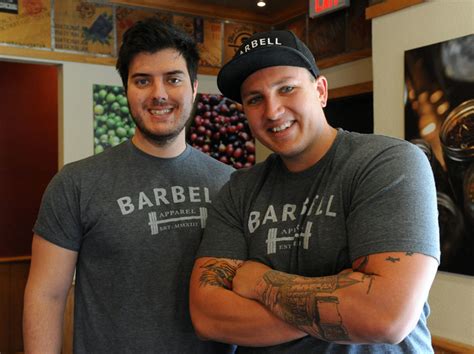This article is part of the Gigabeat Execs In Tech series, where we explore the minds and motivations of standout founders. Hunter Molzen, cofounder of Barbell Apparel, helped mainstream “athletic fit” by turning a personal pain point—jeans that don’t fit lifters—into a bootstrapped DTC brand with cult loyalty. Here’s his journey, playbook, and impact.
Early Career: Vegas roots, builder’s mindset
Molzen grew up in Las Vegas and—like many early Barbell customers—spent serious time under a barbell. That proximity to the problem would define the company he later built with friends and fellow founders Alex Hanson and Karl Workman. (Instagram, Tracxn)
The Birth and Rise of Barbell Apparel: Kickstarter to category maker
In April 2014 the team launched “Barbell Denim” on Kickstarter with a $15,000 goal. They blew past it in under an hour and ultimately raised $735,794 from 5,288 backers—enough to produce ~7,000 pairs out of the gate and validate the unmet demand for athletic builds. National outlets quickly took notice. (Entrepreneur, Kickstarter, Las Vegas Review-Journal)
Mainstream coverage framed the moment: this wasn’t just another denim drop; it was a shift powered by the CrossFit era and “strong, not skinny” culture. That narrative helped the brand punch above its weight and signal a new product standard. (Glamour, SELF)
Scaling the Brand: From jeans to a full wardrobe
Bootstrapped from day one, Barbell expanded from athletic-fit jeans into chinos, dress pants, tees, polos, joggers, women’s lines, and more—staying anchored to the same sizing philosophy (room in the seat and thighs, tapered where it counts). In 2020, Barbell opened its first brick-and-mortar store at Downtown Summerlin to bring fit education offline. (Shopify, Shark Tank Products, Summerlin)
Barbell also stepped onto ABC’s Shark Tank (Season 8). They walked away without a deal—but with momentum and awareness that fueled the next stage of growth. (Shark Tank Blog)
Leadership & Success: The Molzen Playbook
- Build for the edge case you live. Start with lifters—people most ignored by legacy fits—and you’ll learn faster than the generalist brands. (Muscle & Fitness)
- Use crowdfunding as a truth serum. Kickstarter wasn’t marketing theater; it was a willingness-to-pay test that de-risked inventory and funded iteration. (Kickstarter)
- Stay scrappy and close to the customer. Early Barbell manufactured locally before scaling, kept comms tight post-campaign, and bootstrapped discipline into the culture. (Shopify)
Why It Matters: Making “athletic fit” the default, not the niche
By productizing a better fit—and telling a story that celebrated strong legs instead of hiding them—Molzen and team helped push athletic cuts into the mainstream. Coverage from national outlets chronicled the shift and gave founders everywhere a playbook: serve the underserved, then scale. (Glamour, SELF)
The Legacy in Motion
Molzen’s imprint on modern apparel is clear: he proved a tight, needs-based thesis can carve out a durable brand against giants. From crowdfunding to stores, from denim to dress pants, the through-line is the same—build clothing around real bodies and real movement, then keep listening. (Summerlin, Barbell Apparel)

